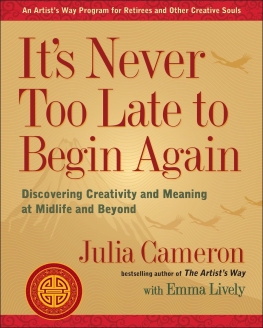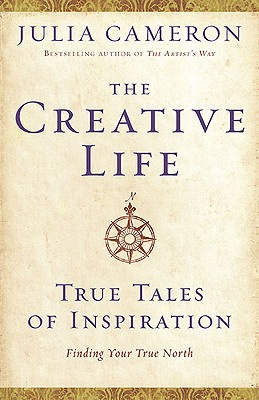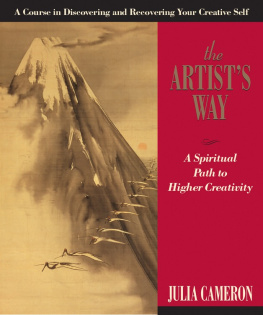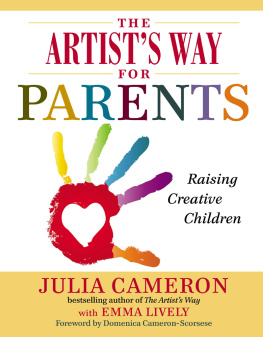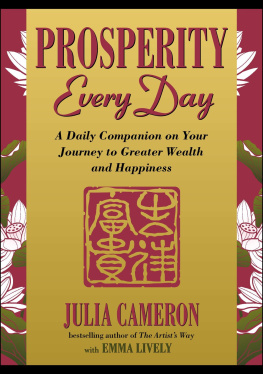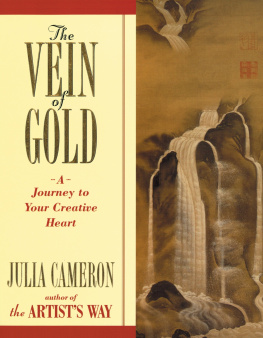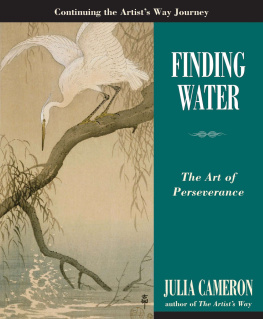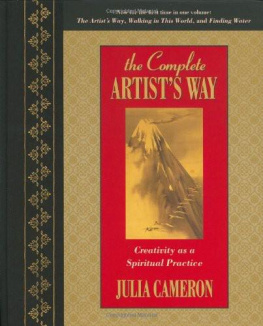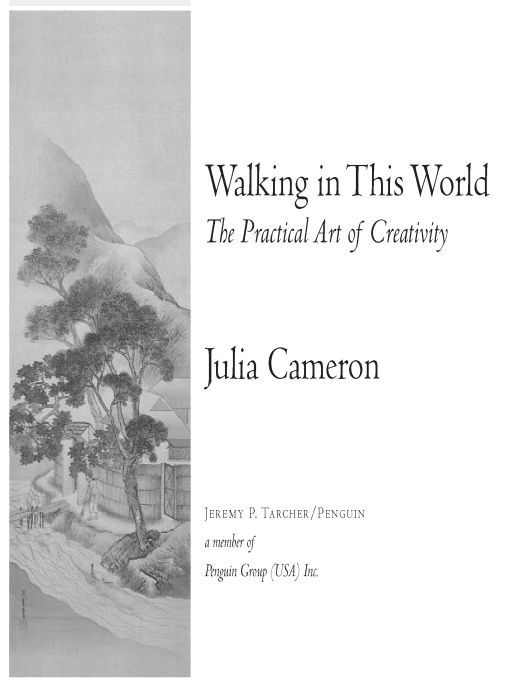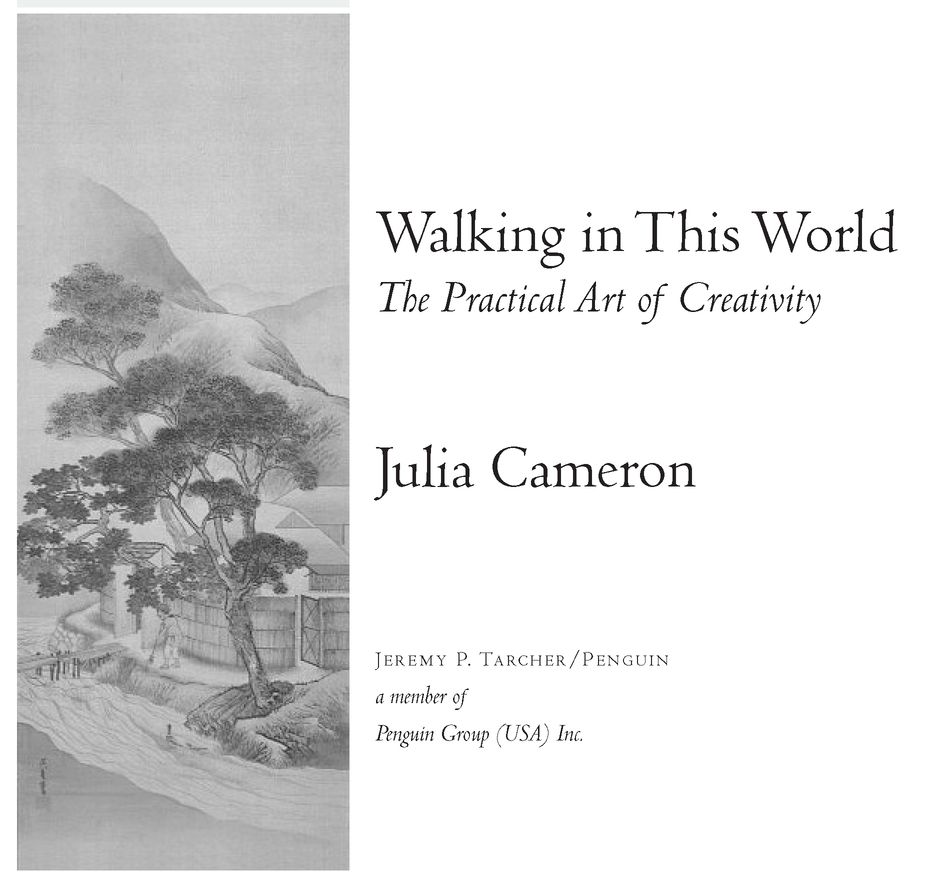Table of Contents
ALSO BY JULIA CAMERON
NONFICTION
The Artists Way
The Artists Way Morning Pages Journal
The Artists Date Book
(illustrated by Elizabeth Cameron)
The Vein of Gold
The Right to Write
God Is No Laughing Matter
Prayers from a Nonbeliever
Supplies
God Is Dog Spelled Backwards
(illustrated by Elizabeth Cameron)
Heartsteps
Blessings
Transitions
Inspirations: Meditations from The Artists Way
The Writers Life: Insights from The Right to Write
The Artists Way at Work
(with Mark Bryan and Catherine Allen)
Money Drunk, Money Sober (with Mark Bryan)
FICTION
Popcorn: Hollywood Stories
The Dark Room
POETRY
Prayers for the Little Ones
Prayers for the Nature Spirits
The Quiet Animal
This Earth (also an album with Tim Wheater)
PLAYS
Public Lives
The Animal in the Trees
Four Roses
Love in the DMZ
Bloodlines
Avalon (a musical)
The Medium at Large (a musical)
Tinseltown (a musical)
Normal, Nebraska (a musical)
FEATURE FILM
(as writer-director) Gods Will
This book is dedicated to Jeremy P. Tarcher,
editor, publisher, and visionary.
With gratitude for his clarity, wisdom, and wit.
Above all, with gratitude for his friendship.
ACKNOWLEDGMENTS
Sara Carder, for her meticulous care
Carolina Casperson, for her believing eyes
Sonia Choquette, for her visionary optimism
Joel Fotinos, for his faith and vision
Kelly Groves, for his clarity and enthusiasm
Linda Kahn, for her clear-eyed perception
Bill Lavallee, for his optimism and strength
Emma Lively, for her stubborn faith
Larry Lonergan, for his humor and guidance
Julianna McCarthy, for her artful heart
Robert McDonald, for his inspiration and artistry
Bruce Pomahac, for being a believing mirror
Domenica Cameron-Scorsese, for her love and discernment
Jeremy Tarcher, for his friendship and guidance
Edmund Towle, for his good-humored wisdom
Claire Vaccaro, for her sense of beauty
Jerusalem Is Walking in This World
This is a great happiness.
The air is silk.
There is milk in the looks
That come from strangers.
I could not be happier
If I were bread and you could eat me.
Joy is dangerous.
It fills me with secrets.
Yes hisses in my veins.
The pains I take to hide myself
Are sheer as glass.
Surely this will pass,
The wind like kisses,
The music in the soup,
The group of trees,
Laughing as I say their names.
It is all hosannah.
It is all prayer.
Jerusalem is walking in the world.
Jerusalem is walking in this world.
INTRODUCTION
IT IS A DIM DECEMBER DAY. Outside my window, down in Riverside Park, an old woman strolls in the weak sunlight, leaning on the arm of her companion. Slowly and carefully they move along the cobbled path. Every so often they pause to take in the antics of a squirrel scampering along a tree branch or a bold blue jay swooping noisily down in front of them to claim a crumb.
One of my favorite ways to talk with friends is to walk with them. I love being engaged with the larger world and with each other. I love having my thought interrupted by the raven sailing in to land on a stone wall. I love the slow drift of autumn leaves, of snowflakes, of apple blossomseach in season. Walking and talking humanize my life, draw it to an ancient and comforting scale. We live as we move, a step at a time, and there is something in gentle walking that reminds me of how I must live if I am to savor this life that I have been given.
I try to catch every sentence, every word you and I say...
ANTON CHEKHOV
Savoring this life becomes an automatic and appropriate response the minute I dispense with velocity and pressure. This earth is beautiful and so are weif I just take the time to notice. At this time I split my life between New Mexico and New York, between walks in Riverside Park and walks on a dirt road through sagebrush, where we need to be alert for rattlers, to whom the road is an inconvenience, an interruption of their fields of rolling sage and fragrant pion.
It is on these walks that my best ideas come to me. It is while walking that difficult clarity emerges. It is while walking that I experience a sense of well-being and connection, and it is in walking that I live most prayerfully. In New York I am a cave dweller, walking in the late afternoons, dazzled by the gold beribboned sunsets that bedizen the city skyline. When I can, I walk with friends, noting always how companionable our silences become, how effortlessly deep and true our conversations. It is my hope that the careful, slow structure of this book will allow it to approximate such walks for you. By going slowly, we move quickly through our many layers of defense and denial until we touch the living pulse of creativity within us all. The Great Creator made this world to dazzle and move us. When we slow our tempo to match the natural worlds, we do find ourselves dazzled and moved.
Ten years ago I wrote a book called The Artists Way, suggesting that our creative unfolding was a spiritual unfolding and that we could workand walkhand in hand with the Great Creator. A decade has passed and the teachings of that book still ring true to me. The two pivotal tools, three pages of longhand morning writing called Morning Pages and a weekly solo adventure called an Artists Date still serve meand now a million plus readersvery well. In ten years nothing has changed. The drill remains exactly the same. In addition, another powerful tool, the Weekly Walk, has emerged as pivotal.
Time is not a line, but a series of now-points.
TAISEN DESHIMARU
Nothing brings home the beauty and power of the world that we live in like walking. Moving into our bodies, we embody the truth that as artists we are out to make a body of work, which means we must encompass more than each days march. A Weekly Walk helps us to acquire such an overview. It allows us to find both perspective and comfort. As we stretch our legs, we stretch our minds and our souls. St. Augustine, himself a great walker, remarked, Solvitur ambulandoit is solved by walking. The it that we solve may be as particular as a bruising romance or as lofty as the conception of a new symphony. Ideas come to us as we walk. We also invite their quieter friend, insight. Walking often moves us past the what of our life into the more elusive why.
Perhaps it would be helpful to give you a sense of what my creative practice is like. It is daily and portable. Its only requirements are paper, pen, and shoes.
The best thoughts most often come in the morning after waking, while still in bed or while walking.
LEO TOLSTOY
I wake up in the morning, reach for a pen and a Morning Pages journal, and I dip my soul into my current life, noting what makes me agitated, what makes me irritable, what finds me excited, what feels like drudgery. I dip my pen to the page with the same methodical devotion that a woman in the high mountains of Tibet scrubs clothes in the stream, scouring them against a rock. It is a ritual, a way to start the day and a way to come clean before myself and God. Theres no pretending in Morning Pages. I really am that petty, that fearful, that blind to the miracles all around me. As I write, the light dawnsjust as the sun comes up over the mountainsand more is revealed. I see why I am frightened, whom I should call to make amends to, what I need to do in this particular days march to inch ahead a little. Just as the women washing clothes may pause long enough for that one moment of connection as the sun dazzles the flank of a towering peak, so, too, I get my moments of insight, my glimpses into the why behind the what that I am living. But for the most part, the pages are routine. I do them because I do them. I do them, because they work. They keep my consciousness scrubbed clean.


